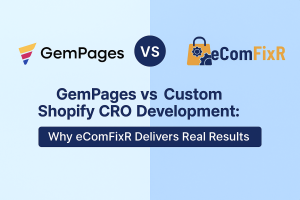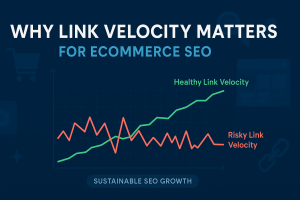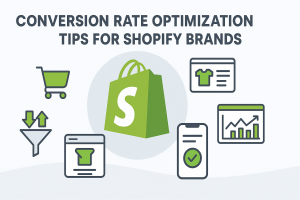Introduction:
The dream of launching your own online store is exciting, but translating that vision into a thriving ecommerce website requires careful planning. Beyond just having a visually appealing storefront, a successful ecommerce platform needs to be user-friendly, secure, and scalable to accommodate your growth. But with a vast landscape of ecommerce website development companies offering various solutions, how do you choose the perfect partner to bring your online business dream to life?
This comprehensive guide explores the crucial factors to consider when building an ecommerce website, empowering you to make informed decisions that set your online store on the path to success. Whether you’re a seasoned entrepreneur or a budding business owner, this guide will equip you with the knowledge to navigate the world of ecommerce development and find the perfect partner to propel your online venture forward.
Create a Website That Is Relevant to Your Product Category
Your logos, colors, layouts, and website theme should all fit the product niche you are selling. Assume you want to start an online store selling food. You wish to sell a wide range of goods, including meals, drinks, desserts, fast food, and many more.What design should your website have, then? Here is a picture of a startup eCommerce business in Bangladesh. It offers a wide range of goods in the house specialty. The website’s design seamlessly blends in with the niche. You can use it as a model to see how your website design ought to appear.

Make It Responsive for All Devices
Responsive web design enables internet users to access the eCommerce site from any device. According to Statista, mobile phones currently account for more than 54% of global web traffic. Furthermore, many consumers choose to purchase things utilizing their mobile phones to save time.
So, unless your website is mobile-friendly, you will miss out on a significant market potential.
User-Friendly Interface
eCommerce websites typically feature various products and product categories. Payment, shipping, contact information, and other topics are all covered on separate pages. If your website is not well-organized, it may waste your online visitors’ time.The following are the qualities of a user-friendly interface:
- Clean design
- Easy navigation
- Clear CTA buttons and Links
- Eye soothing texts and fonts
- Dynamic information structure
- Contrasting color scheme
- First loading times
Make Sure Easy Search Options to Find Products
On Daraz, Alibaba, and other prominent websites, you will find a variety of filtering choices on the search pages. Examples include price, review, brand, location, and warranty type. This saves buyers time and allows them to find the exact product they are looking for.In addition to search bars and filtering choices, you must also provide an auto-complete search suggestion feature. Because it elevates the user experience to another level.
Include Essential Pages
Indeed, quality product content is critical to the success of an eCommerce site. However, in order to effectively present them, you will need to develop several pages. Also, you need to rely on these pages to provide a smooth shopping experience to the customers. Here are the essential pages for an eCommerce website.
- Home page: The homepage serves as your website’s storefront. This is the initial page that an internet user sees when visiting your website. The site showcases featured products, promotional messaging, and best-selling items.
- Category page: The category page displays a collection of related product items. The category page connects the homepage and product pages.
- Product Page: The product page provides an individual view of each product item. It covers prices, variations, shopping options, features, colors, measurements, reviews, and more. Customers use this page to decide whether or not to purchase this product.
- Shopping Cart: You must design a dynamic shopping cart page that allows internet customers to add their selected products while browsing a website. After that, people can buy these products collectively at a more convenient time rather than individually.
- Payment: The payment page includes various sections for customers to enter their payment information. This information is then forwarded to the payment gateways, which completes the payment process.Many eCommerce sites provide fascinating possibilities on this page. Examples include gift cards, promo codes, reward points, cashback offers, and discount coupons.
- Return & Refund Policy: Do you realize that approximately 30% of things ordered online are returned? This is why more than 80% of people avoid shopping on eCommerce sites that do not offer a return and refund policy. Amazon, Walmart, AliExpress, and other well-known eCommerce companies have a 7-14 day refund policy depending on the product.However, if the defect is caused by the consumer, you are not required to refund them. However, you should inform your customers about your return and refund procedures in advance.
- Login/Create Account: This page allows customers to subscribe, establish user accounts on your site, and save their personal information. It eliminates the inconvenience of repeatedly supplying the same information for each purchase.
- About us Page: The about us page informs online clients about your company, such as its location, product offerings, mission, vision, business objectives, goals, length of time in business, and so on. You can also provide contact information (phone number, email address, and social media links) on this page.
- Terms & Conditions: If there are any unique regulations and guidelines that are not listed on another page, they might be explained on this page. This page often defines acceptable practices and legal words that safeguard both consumer rights and the interests of the corporate organization.
Write Engaging Product Descriptions
One of the most significant constraints of internet shopping is that clients cannot actually inspect the product before purchasing it. Everything they do is based on the information you provide about your products. This is why they place so much emphasis on product descriptions.So, write your product description in an exciting manner so that no one becomes bored while reading. Do not forget to include the weight, length, and color of your products in the description. And never provide incorrect information in product descriptions in order to enhance sales. Because it can undermine your credibility.Today, it’s difficult to find an eCommerce website without product images. It’s because high-quality visuals create an extradimensional attraction in shoppers’ minds. As a result, your product description must also incorporate high-quality photographs and videos. However, ensure that you are not infringing on any copyrights.
Add Multiple Payment Options
eCommerce websites cannot serve a wider range of customers unless they accept multiple payment methods. When developing a website, consider which payment methods are most popular with your target audience.If you are conducting online commerce in Bangladesh, your payment options should not be confined to Visa or MasterCard. You must also connect Bkash, Nagad, and Rocket. In India, major payment methods include Razorpay, Instamojo, and PayPal.
Provide Multiple Shipping Options
According to Forbes, more than 60% of buyers prefer not to buy things from brands that do not provide free shipping. Additionally, they want this delivery as quickly as feasible. However, when merchants attempt to provide speedy shipping, their costs increase significantly.To address this issue, many eCommerce portals now provide several delivery options. It spans from free shipping to DHL, FedEx, and UPS explaining their fees. It enables clients to select the optimal shipping choice for their time, value, and budget.
Take good care of cyber security
When someone places an order on an eCommerce site, he must offer a wealth of valuable information. Examples include phone numbers, credit card numbers, email addresses, bank accounts, and so on. Unless a website’s security barriers are properly maintained, hackers can quickly acquire vital information. Furthermore, Google never encourages websites that do not use SSL certificates and HTTPS protocols. As a result, you must exercise caution while dealing with security concerns. Today, you may discover a variety of software and solutions to protect your website from malware attacks.
Allow Guest Checkout
The guest checkout feature enables online clients to place orders on the eCommerce website without registering an account. Having a guest checkout option on a website can boost its conversion rate by up to 45%.This technique has gained worldwide popularity in recent years. Customers no longer need to disclose all of their personal details to place an order.
Collect Reviews from Your Users
Ratings and reviews refer to user comments provided after utilizing a product. Positive reviews are like gold for any online business. Because 87% of customers now perform online research before purchasing a product.An example of how to display eCommerce product reviews They like to buy things that have good evaluations and ratings. Reviews can take several forms, including written reviews, short videos, product unboxings, and photographic content. So, you must allow your customers to leave important feedback on each of your product pages.
Ensure Right CMS Integration
Managing a website is a complex task. You must add new products, publish blog posts, collect orders, validate payments, process refund requests, update themes, and so on. If you are not a technical person, you will struggle to run a website without a content management system. The content management system is a simple toolkit that provides all of the required choices for creating, editing, formatting, and publishing web content on a single platform. WordPress, Wix, OpenCart, and Magento are popular content management systems (CMS). To maintain your website, you should utilize one of these content management systems.These are the most crucial considerations when creating an eCommerce website. It will improve the chances of success in this industry.
FAQs Related to eCommerce Website Development
Here, we will answer the most often asked concerns about what to consider while developing an eCommerce website.
Top 5 features are a must for any eCommerce site
i) Responsive design
ii) High-quality visuals
iii) User-friendly navigations
iv) FAQ section
v) In-depth product descriptions
What Are The Things to Consider When Building an eCommerce Website FAQ
– Define your target audience, choose the right platform, design a user-friendly interface, ensure secure payment options, and plan for future scalability.
– The user experience is crucial in an eCommerce website as it directly impacts conversion rates and customer satisfaction. Factors contributing to a positive user experience include intuitive navigation, fast loading times, mobile responsiveness, clear product descriptions, easy checkout process, and reliable customer support.
– To protect an eCommerce website and its customers’ sensitive information, essential security measures include implementing SSL encryption, using secure payment gateways, regularly updating software and plugins, employing robust password policies, conducting security audits, and complying with data protection regulations like GDPR or CCPA.
– Businesses can optimize their eCommerce websites for search engines by conducting keyword research, optimizing product titles and descriptions, creating unique and valuable content, improving site speed and mobile-friendliness, optimizing metadata, implementing schema markup, building quality backlinks, and regularly monitoring and updating their SEO strategy based on analytics and search engine algorithm changes.
– When integrating payment gateways, prioritize security and convenience. Choose reputable gateways compliant with PCI DSS, ensure SSL encryption, streamline checkout, implement fraud detection, and provide clear refund policies for customer trust and smooth transactions.





